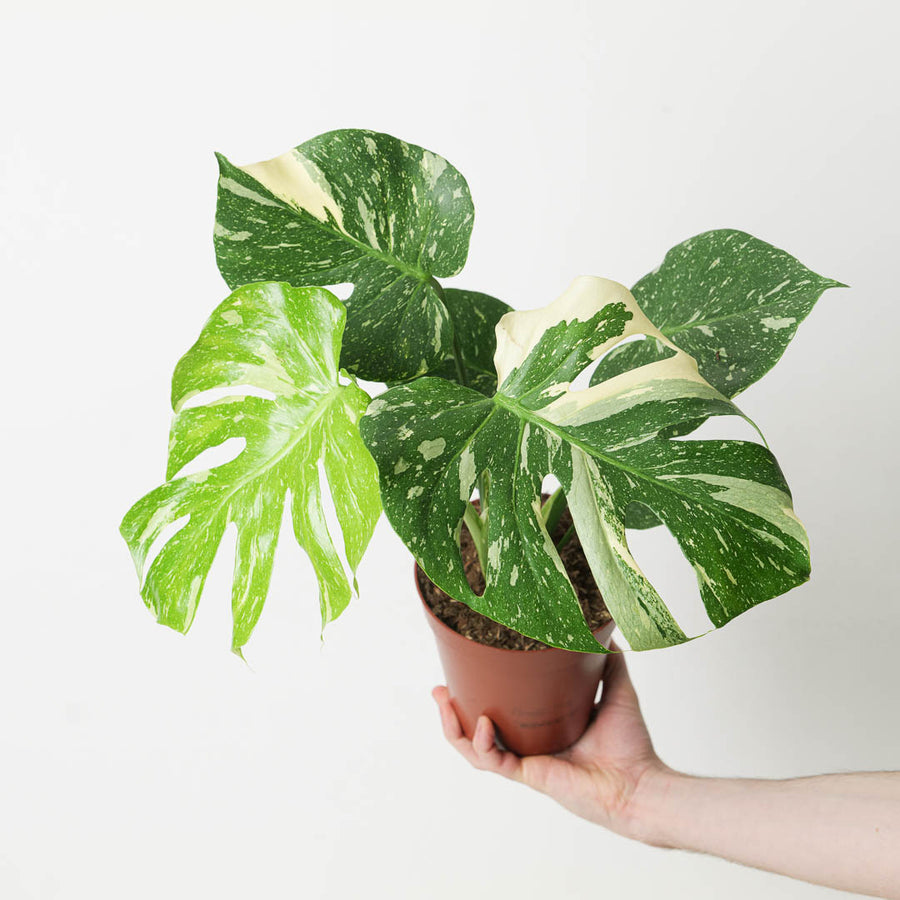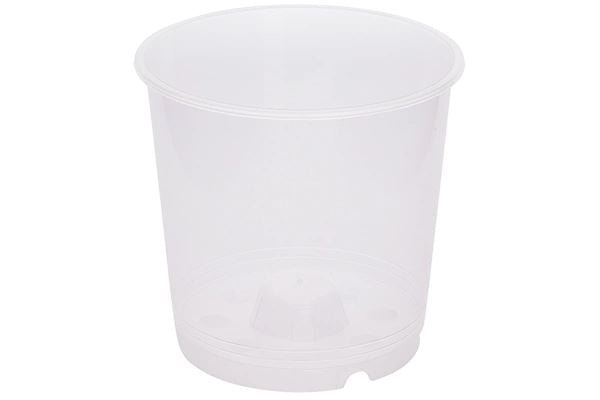Xanthosoma
Xanthosoma, often referred to as “Elephant Ear” due to the large, heart-shaped foliage that bears a striking resemblance to an elephant’s ears, is a stunning and somewhat underappreciated member of the Araceae family. Native to tropical regions of Central and South America, as well as the Caribbean, Xanthosoma thrives in humid, warm environments, making it a perfect choice for creating a tropical oasis indoors.
In the wild, Xanthosoma is typically found growing near rivers and in rainforests, where the plant enjoys rich, moist soil and filtered light. In its native habitat, it can grow into a towering plant with large, glossy leaves.
In this guide, we will explain the proper care for your Xanthosoma houseplants, focusig on watering, lighting, repotting and common problems.
What Lighting Do Xanthosoma Need?
Xanthosoma plants are fairly versatile when it comes to light, but they do best in bright, indirect light. A south or south-east window would be perfect. In their natural habitat, they are often found in the dappled light beneath larger trees, so they aren’t used to direct sun exposure. Prolonged direct sunlight can scorch their large leaves, leaving unsightly brown spots or faded patches. To mimic their native environment, place your Xanthosoma in a location where it will receive bright but filtered light.
If your plant is placed in a shadier area, it may survive, but you might notice slower growth and a lack of the rich, vibrant green that these plants are known for. Be mindful of the lighting conditions to ensure your Xanthosoma remains healthy and full of life.
How Often Should I Water My Xanthosoma?
Xanthosoma plants enjoy consistently moist soil, but, like most tropical plants, they do not like sitting in waterlogged soil. You should aim to water your Xanthosoma when the top inch or two of the soil feels dry to the touch. In general, this will mean watering once a week during the warmer months and slightly less during the cooler, dormant periods in winter.
Make sure that your pot has good drainage to prevent water from collecting at the bottom, which can lead to root rot. If you find the soil drying out too quickly, you can increase humidity around the plant by misting the leaves regularly or using a humidifier. Alternatively, placing your Xanthosoma on a tray of pebbles and water can also help keep moisture levels up.
When Should I Repot My Xanthosoma?
Repotting Xanthosoma is essential to maintain its health as it grows. Like many tropical plants, they can become root-bound if left in the same pot for too long. You should consider repotting your Xanthosoma every 1-2 years, or when you notice that its growth has slowed down or the roots are emerging from the drainage holes.
When repotting, choose a pot that is 2-3 inches larger in diameter than the current one, and ensure that the new pot has adequate drainage. Xanthosoma plants thrive in well-draining, fertile soil that retains moisture but also allows for proper aeration, like our Simply Houseplant Potting Mix. It’s important for water to freely meet the roots, without it disturbing air flow.
Common Issues When Growing Xanthosoma
While Xanthosoma is relatively easy to care for, there are a few issues that may arise if the plant is not given the right conditions. Here are some common challenges to watch out for:
Yellowing Leaves
Yellowing leaves are often an indication of either overwatering or poor drainage. Overwatered Xanthosoma plants tend to develop root rot, which leads to yellowing leaves and stunted growth. Ensure your plant is in a well-draining pot and that the soil is not consistently soggy. If you suspect root rot, gently remove the plant from its pot and inspect the roots for any signs of decay. Trim any rotting roots and repot the plant in fresh soil.
Brown Leaf Tips
Browning at the tips of the leaves is commonly caused by underwatering, low humidity, or exposure to direct sunlight. Xanthosoma thrives in humid conditions, so it’s important to maintain humidity levels in your home. If you’re experiencing dry air, mist the plant regularly or use a humidity tray. Also, make sure the plant is not sitting in direct sunlight, as this can cause leaf burn.
Slow Growth
If your Xanthosoma isn’t growing as quickly as you’d expect, it might be a sign that it’s not receiving enough light. While Xanthosoma can tolerate lower light conditions, it needs bright, indirect light to thrive. If your plant is in a darker corner, try moving it to a location where it will receive more light, but avoid placing it in direct sun. Additionally, a liquid fertiliser might give your Xanthosoma an extra boost it needs to grow in the spring and summer months.
Pests
Xanthosoma plants are not particularly prone to pests, but they can occasionally attract spider mites, mealybugs, and aphids. These pests tend to target the undersides of the leaves, so make sure to check them regularly. If pests are detected, remove them with a damp cloth or use a gentle insecticidal soap.
Wilting Leaves
Wilting is another sign of overwatering or underwatering. If the plant has not been watered enough, the leaves will droop and lose their firmness. On the other hand, if the roots are sitting in waterlogged soil, the plant will also exhibit wilting as the roots begin to suffocate. Be sure to check the soil moisture regularly and avoid extremes.
Trending Xanthosoma at GrowTropicals

Xanthosoma Mickey Mouse - £26.99
Need More Help?
If you have any questions or need additional care tips, don't hesitate to reach out to us via email or DM. Our team at GrowTropicals is here to assist with all aspects of Xanthosoma care, from repotting advice to troubleshooting common issues. We’re committed to helping you simplify plant care.
With the right care and attention, your Xanthosoma will be an eye-catching and rewarding addition to your plant collection, offering beauty, air-purifying benefits, and a touch of tropical elegance for years to come.





